April: Hungry for Spring
Frontenac State Park Association newsletter Vol. 2, No. 4, April 2024
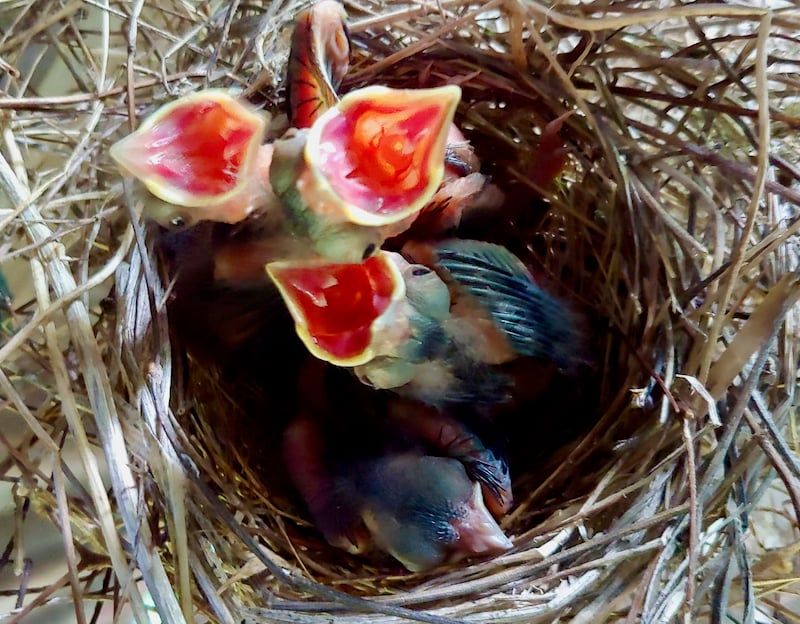
April: Hungry for spring … and here it is!
Our whacko winter has waned, and we couldn’t be more curious to see what April, the moon of reawakenings, holds this year. Will we be blessed with April showers? Another late snowstorm or two? Will spring ephemerals arrive earlier than usual? What about mushrooms? Birds? And will your newsletter editor ever stop obsessing over the weather?
Hard to say, on any of that, but some things we know for sure: Green things will arise in the woods of Frontenac State Park. Bird watching will be glorious, as waterfowl, raptors, sparrows, warblers and more flock back and stay or migrate through. And with a fleece layer or two, we winter-weary humans can finally have some sweet picnics up at our beloved park’s beautiful overlook. Yeah!
Your Frontenac State Park Association has some truly fun stuff planned for April. Read on for inspiration and invitations! And for entertaining takes on kids and nature, possible answers to the mystery of why oak trees hold many of their leaves all winter, the nasty (but necessary) habits of turkey vultures, jaw-dropping photos (National Geographic will be jealous!), and the best poem ever written about the beautiful mess that is spring.—Pamela Miller,FSPA newsletter editor
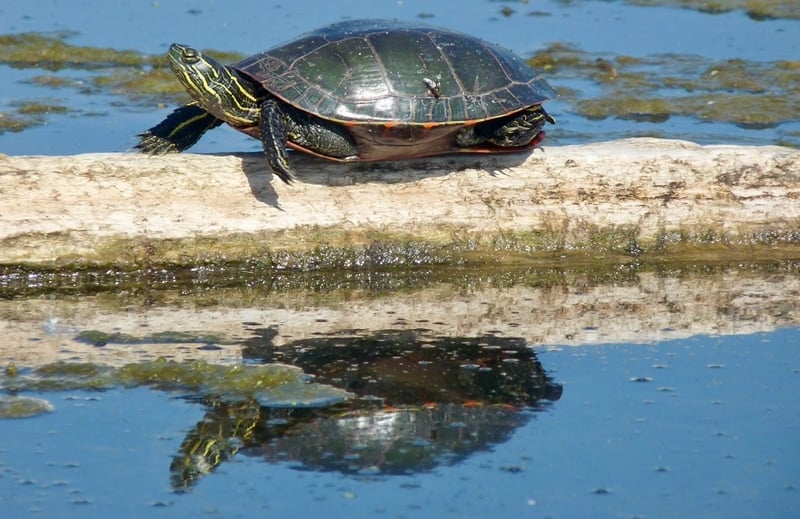
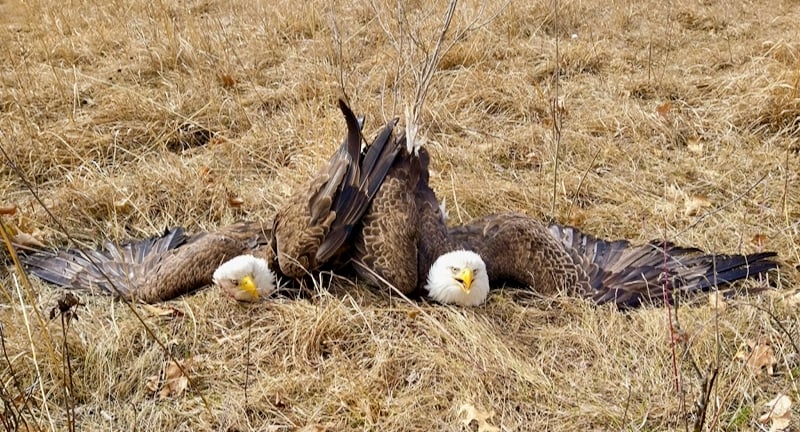
Our April events: You’re invited!
Saturday, April 6, 9-11 a.m.: Guided bird walk through a mixed habitat of prairie and woodland with Minnesota Master Naturalist volunteers who are also FSPA members. Bring binoculars or borrow some from the park office. Meet at the campground kiosk. Questions? Email janetmalotky@gmail.com.
Saturday, April 20, 9 a.m.-noon: Earth Day cleanup on the Sand Point Trail and its river beach. Most years, this treasure of a trail floods, leaving behind lots of debris, most of it plastic that has floated in from God knows where. We'd love your help in cleaning it up. Meet at the Sand Point Trail parking lot off of Hwy. 61 at the southern turn-in to County Road 2 just before 9 a.m. The FSPA will provide information and equipment at the trailhead. Wear sturdy shoes and bring bug spray. Cleanup will take place even if there is light rain or if parts of the area are flooded. Bonus: We always see very cool birds during this event. Questions? Email jeneannnolting@gmail.com.
Saturday, April 27, 10 a.m.-noon: Walk + Talk with Ranger Jake Gaster on Post-Fire Ecology: The park regularly uses prescribed burns to maintain its ecosystem’s stability and diversity. Have you ever wondered how that works, and what makes a prescribed fire different from a wildfire? Bring us your burning questions! Ranger Jake Gaster will guide us around a recently burned area on the Prairie Loop Trail to see first-hand how fire benefits these landscapes. The hike, which covers uneven but not dramatically hilly terrain, lasts about an hour and a half. Wear sturdy shoes and bring water, sunscreen and bug spray. Questions? Call the park at 651-299-3000.
That same day—Saturday, April 27—is one of several days during the year when entry to all Minnesota state parks is free. Look for FSPA members, information, and maybe some free snacks, if you all behave, up at the park’s main picnic shelter.
Through May. Don’t forget our fundraising drive to help the Park replace its iconic entrance sign. See the March newsletter for more information.
More details in the May newsletter, but on May 18, we are excited to be collaborating with Great River Greening on a major buckthorn clearing project, allowing for a new trail in the Park. Register here.
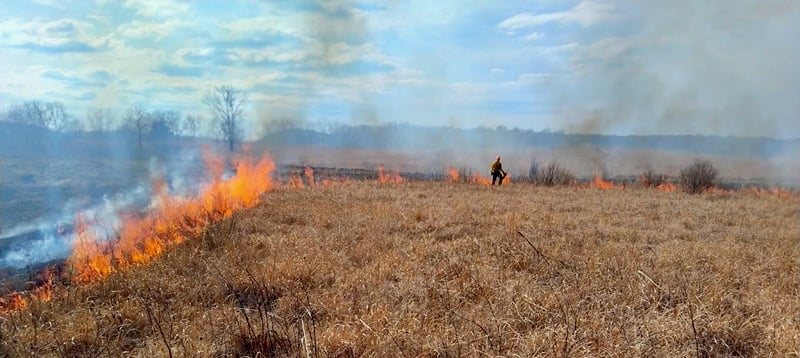
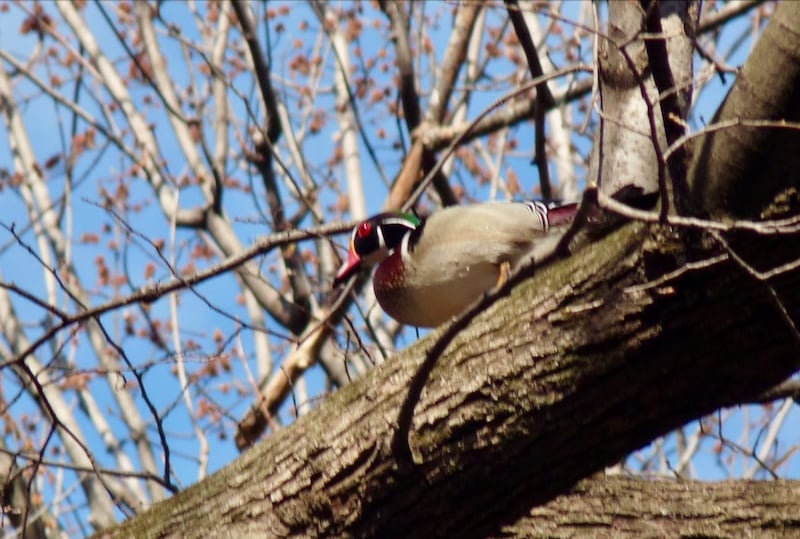
Things we’re working on
Many of you have paused, intrigued, at the wildlife blind overlooking Frontenac Pond while walking the Prairie Loop Trail. You may have noticed that invasive buckthorn and honeysuckle are having their way with the terrain around it. The park recently received a grant from the Parks & Trails Council of Minnesota to improve habitat around the blind. Volunteers will remove the invasives, then seed the area with native grasses and forbs. If you’d like to help out for a couple of hours (you don’t have to be an FSPA member to do so), email stevedietz@duck.com.

FSPA volunteers recently installed a nest box for American Kestrels. Scientific surveys have shown recent declines in American Kestrel populations across North America. Given our park’s amazing prairie resources, a boon to grassland birds, it’s ideal for the nest box. We hope for but don’t expect any kestrel nesting this year, but we’ll be watching to see what birds check out the box.
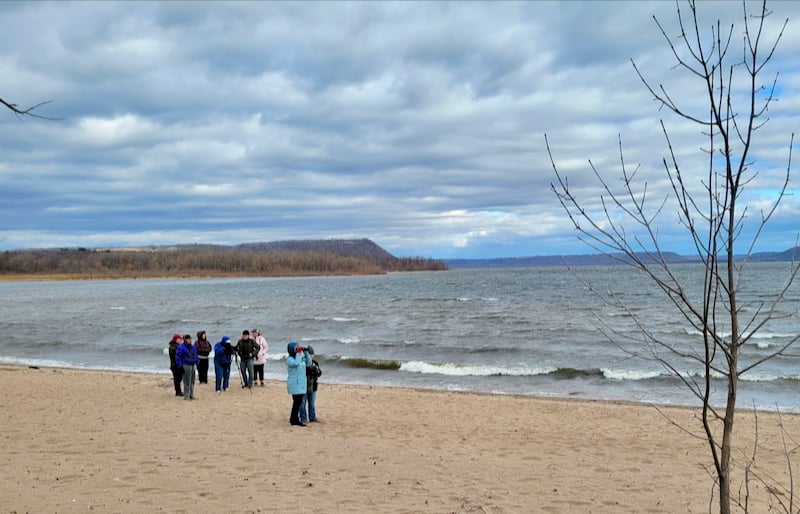
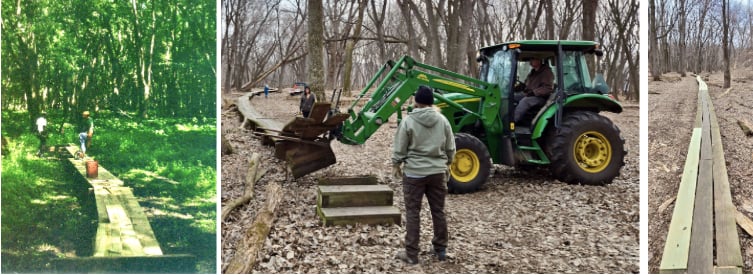
Children and nature: A beautiful alchemy
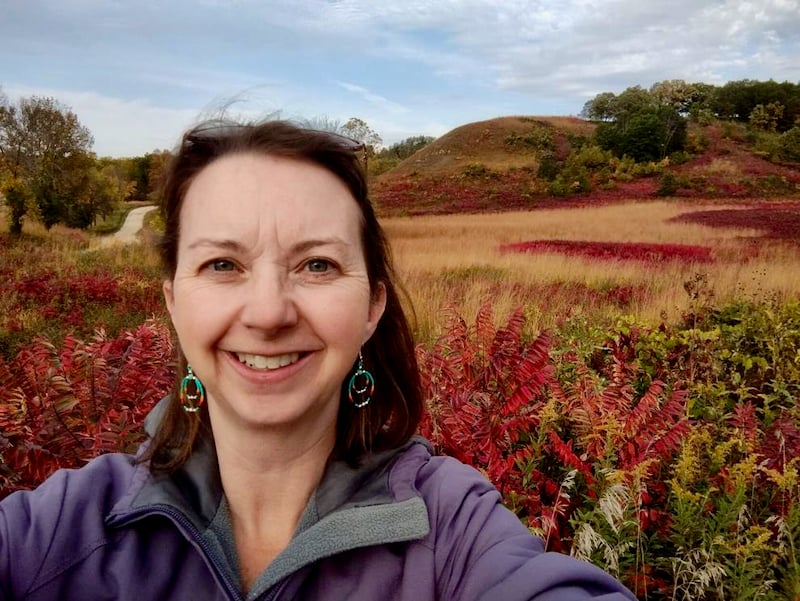
By Pamela Miller, Minnesota Master Naturalist volunteer
When children go outside, magic unfolds. The natural world becomes a playground, a place of fascination, fun and freedom. Nature is a grand teacher, but more importantly, it’s a formative friend, a mighty shaper of physical, mental and emotional health. Few grown-ups know that better than Sara Holger, an interpretive naturalist and founder of Project Get Outdoors, a nonprofit whose missions include helping Minnesota children, especially those from underserved communities, get out into nature. Starting in May, every 2nd Tuesday for 6 months, Sara will lead a free monthly Nature Explorers program for preschoolers at Frontenac State Park, a project supported by the FSPA and the DNR. One Tuesday morning a month, she’ll introduce preschoolers (and their caretakers) to an aspect of nature. May’s introductory program, centered on birds, will be held from 10-11 a.m. on Tuesday, May 14, at the park’s main picnic shelter. Participants will receive free day passes to the park for the event. (While registration is not necessary, we ask that groups with three or more children call ahead to the park to give us a heads-up.)
Many of us in the FSPA met Sara, a passionate and gifted teacher of children and adults, when she taught Minnesota Master Naturalist courses. She holds a degree in natural resources and environmental studies from the University of Minnesota and has been an environmental educator since 1994. In addition to teaching preschool, she's worked for the U.S. Forest Service, the state Department of Natural Resources, the Bell Museum of Natural History, Olmsted County Parks and Minnesota State Parks. Sara lives in Wabasha, Minn., with her husband and children.
We recently sat down with Sara to talk about the joys of introducing children to nature. Here’s some of what she said:
May’s session at Frontenac State Park will be focused on birds. For instance, kids will be encouraged to listen for three or four different bird songs.
The sessions for preschoolers will feature activity stations (including the park’s natural-materials playground), hands-on crafts and scavenger hunts, and there will be take-home educational materials.
Studies show that being outdoors enhances children’s brain development and mental health, as well as helping them with social development, team-building and problem-solving. Being outdoors even helps with long-range eyesight development in a way in which “babies looking at cell phones” can’t, Sara said.
Children who grow up curious about nature are far more likely to become environmental stewards as adults, Sara said. That’s “super important,” she stressed, when more Americans are living in big cities and suburbs and haven’t had the experience of growing up on a farm or in a rural area.
While Project GO has a special emphasis on children from underserved communities—it works with a number of community groups to improve services such as access and transportation—preschoolers and their caretakers from all walks are welcome at Frontenac State Park’s sessions.
“Being in nature is a powerful sensory experience, and children respond to it with excitement,” Sara says. “We’re looking to inspire awe and wonder.”
Sara’s quest to connect more people with nature also includes three other programs, some of which will feature sessions in Frontenac State Park. Well-Being in Nature is a series of free forest-bathing walks for older adults and their caregivers. A second series of the free forest bathing walks is designed for military veterans and their spouses and caretakers. (Sara is a certified forest-bathing guide, and your newsletter editor, who was skeptical of the concept at first, was deeply impressed by the experience of a session with her.) Sara also leads Becoming an Outdoors Woman (BOW) workshops for women and girls 14 years or older for modest fees ranging from $5 to $20. For more information about all of these programs, go to her website, Driftless Naturalist.
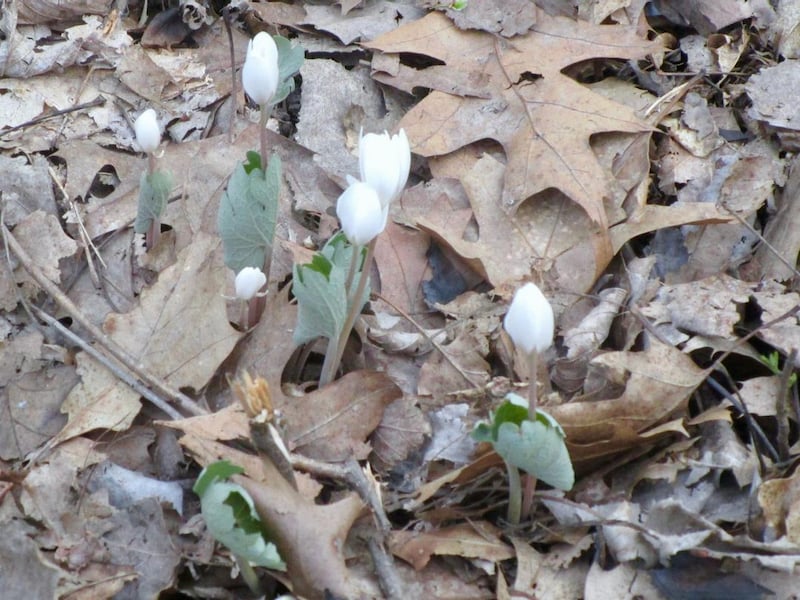
Notes from the field: Indecisively deciduous
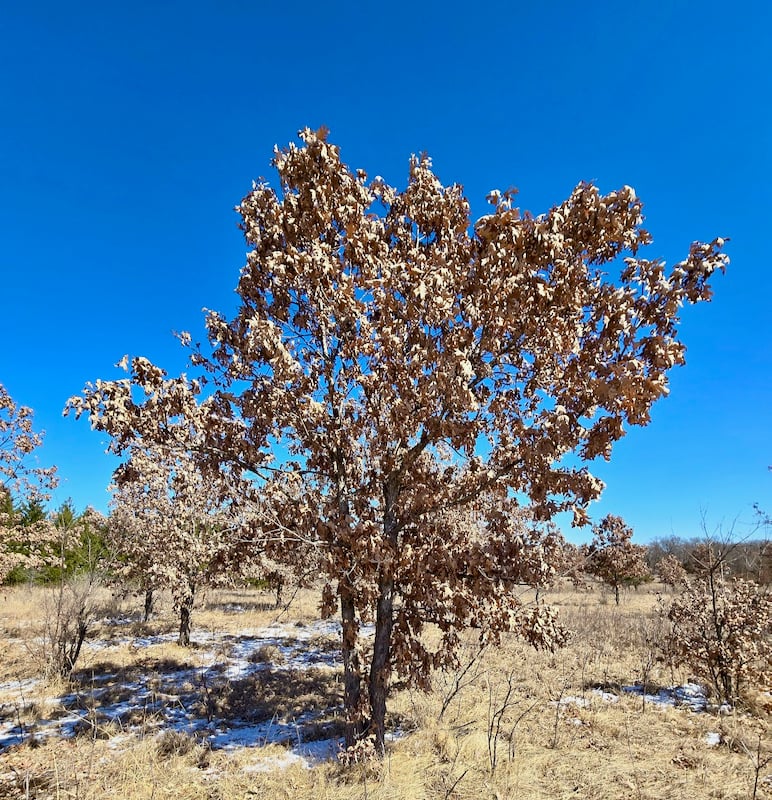
By Steve Dietz, Minnesota Master Naturalist volunteer
For those of us who have a hard time with tree IDs, especially in winter, one thing is certain: Deciduous trees drop their leaves in the fall and coniferous trees stay green all year. Right?
Then what is it with these oak-ish trees? Clearly not a conifer. Definitely have most of their leaves, albeit browned, in late March. There is no definitive consensus about this question, but it is fun to speculate—responsibly, of course.
First, the facts: Retaining leaves is known as marcescence (mar-SES-ents) from the Latin marcescere (“to fade”). In our area, it is mostly oak (Quercus) and beech (Fagus) trees that exhibit marcescence—and of these, it seems to be primarily younger trees as well as the lower branches of more mature trees that hold their leaves.
Many oaks and beeches, especially ones exhibiting marcescence, grow in poor soil. For most deciduous trees, in the fall, certain cells at the end of a leaf-stem are triggered to release digestive enzymes that “cut” the leaf away. But not for marcescent trees.
Why? Most theories fall into three broad categories: protection, water retention and soil composition.
The brown leaves at the ends of trees may protect younger twigs from deer browse as they are less desirable nutritionally and deer might rather look for unprotected sources than nose into a noisy thicket of leaves. This could also help explain why only lower branches of mature trees—within deer reach—exhibit marcescence.
The leaves may also capture wind-blown snow, which then falls and eventually melts around the base of the tree, giving it a competitive advantage over its bare-limbed cousins.
Similarly, when leaves do fall in the spring, they are already partially desiccated by the sun and more quickly compost around the tree, enriching the nutrient-poor soil, giving it another competitive advantage.
My favorite theory is based on the fact that all trees, evolutionarily, were conifers. Over millennia, some became deciduous—for competitive advantage reasons. Oaks and beeches are relatively young genera, evolutionarily speaking, and it may be that in another 100 million years, they’ll drop their leaves in the fall—decisively.
And besides, how can you not love the brittle sound of the leaves rattling in the wind as you walk the prairie?
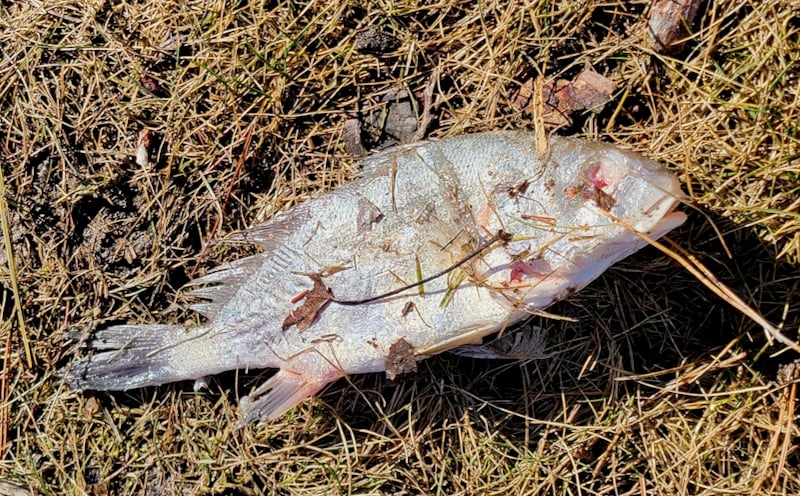
Bird notes: Mama’s little darlings
By Janet Malotky, Minnesota Master Naturalist volunteer
It’s hard to love a Turkey Vulture. They throng together to feast on dead animals, plunging their bald, gory heads into the rotting carcasses. They vomit that smelly effluvia onto others as a defense mechanism, and then poop/pee (same thing in birds) on their own feet to cool off. Shudder! Am I right?
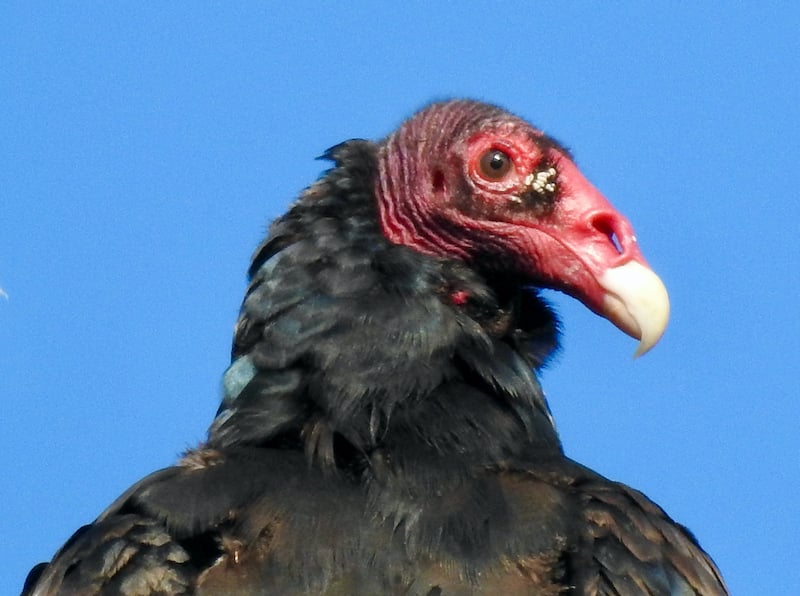
But without Turkey Vultures, our Lake Pepin shoreline would be littered with rotting fish and our park would reek of death. Everywhere they go, Turkey Vultures are key members of the disinfecting clean-up crew of nature. Because they have strong stomach acid, they can even eat rabid animals without getting sick. They’re associated with a lot of yuck, but they beautify our world.
This year, we saw our first Turkey Vultures return to Frontenac State Park on March 19. They came from their overwintering grounds in Mexico, Central America, and the coastal United States. The birds breed here, making a nest with one to three eggs in a shallow depression they scratch into the ground. They’re not that picky about where, as long as it’s away from human traffic. They choose caves, fallen logs, thickets, ledges, even abandoned heron nests or buildings.
Turkey vultures don’t feed their chicks whole prey like other raptors. They barf up partially digested food for the kids. Because of course that’s what they do…
Also in keeping with their ick reputation, Turkey Vultures don’t sing like other birds. The poor things have no voice box, so they’re limited to grunts or silence.
They are amazing flyers though, and when you see them, they usually will be soaring in the sky, rarely flapping a wing as they ride the thermals, searching for food. They mostly use their incredibly keen sense of smell to locate it, but they also watch for other carrion eaters circling and gathering at a carcass.
Their sense of smell is so good that pipeline companies have injected death-smelling chemicals into pipeline contents as a leak-detection method. They find any leaks by watching for Turkey Vultures circling above the pipeline.
You can recognize a Turkey Vulture in the sky and tell it apart from our other common very large soaring bird—the Bald Eagle—in a couple of ways. Unlike Bald Eagles, who usually hold their wings very flat and still while soaring, Turkey Vulture wings are held in an wide upward V-shape (known as a dihedral), and they constantly tilt back and forth, as if struggling to keep their balance.
Turkey Vultures have a red head, often hard to see in flight, but they do look like a bit of a pinhead compared to an eagle. Lastly, Turkey Vultures have a consistent underwing pattern: dark leading edge with a wide, light, trailing edge, rather than the all dark of the adult eagle or the more splotchy look of the immature eagle. You will almost always be able to see this pattern if you wait until the bird tilts into the sun.
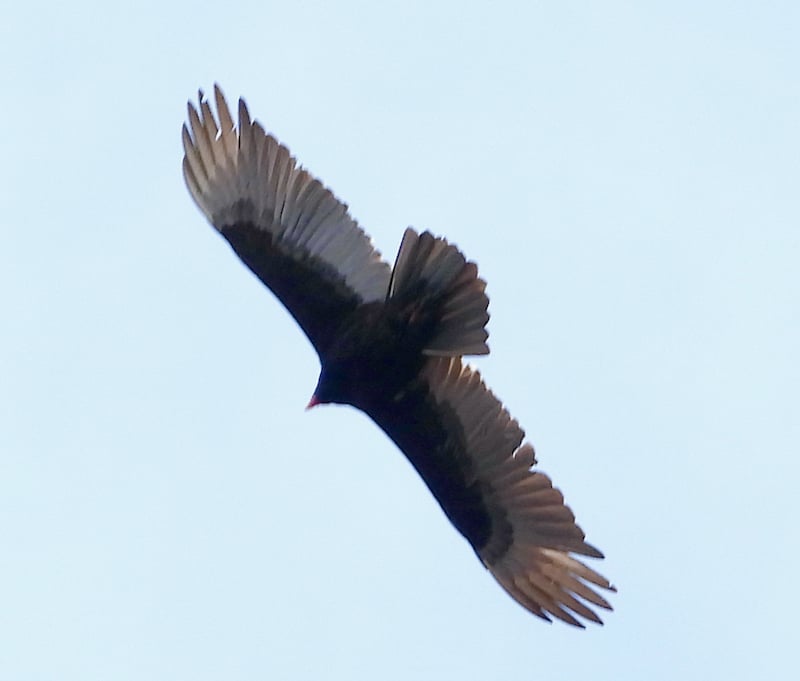
We have lots of Turkey Vultures where we live, sometimes dozens perched in nearby trees. Rather than feeling creeped out by this, I try to appreciate all the good they do for our world. And there’s another thing I like about Turkey Vultures: More than any other bird, they take a great deal of pleasure in flying. When the wind is crazy and I go outside to feel the thrill of weather coming in, so do the vultures riding the thermals overhead. They seem carried away by the joy of soaring. That’s something that’s easy to love.
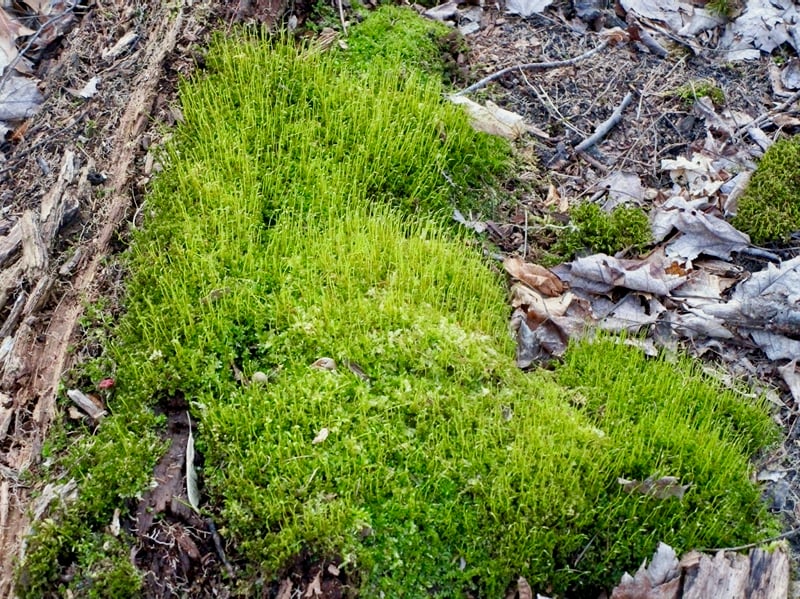
Poem of the month
“Inversnaid”
By Gerard Manley Hopkins (English; 1844-1889)
This darksome burn, horseback brown,
His rollrock highroad roaring down,
In coop and in comb the fleece of his foam
Flutes and low to the lake falls home.
A windpuff-bonnet of fawn-froth
Turns and twindles over the broth
Of a pool so pitchblack, fell-frowning,
It rounds and rounds Despair to drowning.
Degged with dew, dappled with dew,
Are the groins of the braes that the brook treads through,
Wiry heathpacks, flitches of fern,
And the beadbonny ash that sits over the burn.
What would the world be, once bereft
Of wet and wildness? Let them be left,
O let them be left, wildness and wet;
Long live the weeds and the wilderness yet.
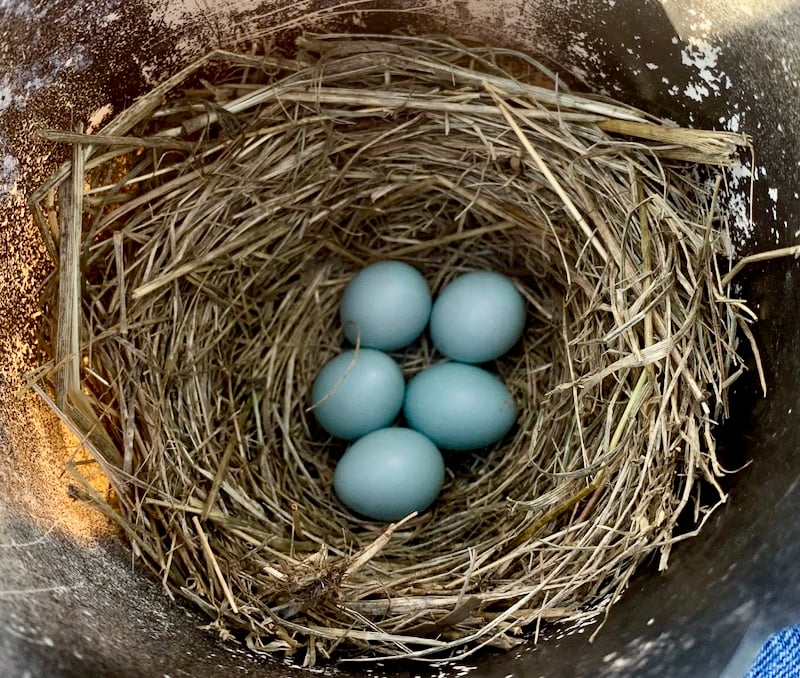
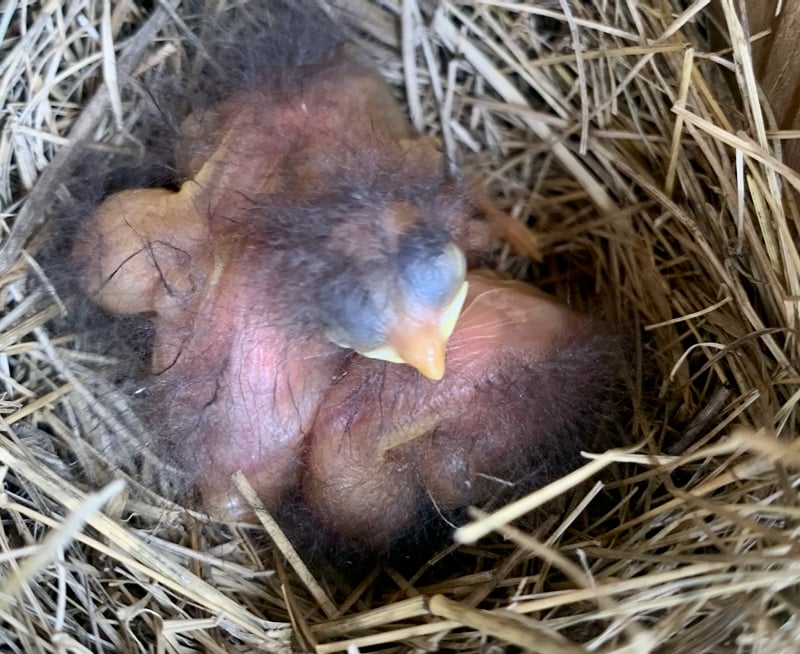
Interested in joining the FSPA?
We’d love to have your support (dues are $25 per year for an individual, $35 for dual/family membership). Here is a link. A reminder that joining us occasionally to help the park out with volunteer efforts is awesome too, even if you’re not a member. The FSPA’s goal is simply to share our love of Frontenac State Park with as many people as possible. To sign up to regularly receive this monthly newsletter, click on “Subscribe” below. Feel free to send questions or comments to your newsletter editor at pamelamarianmiller@gmail.com. Questions about the FSPA? You can reach FSPA chair Steve Dietz at stevedietz@duck.com.
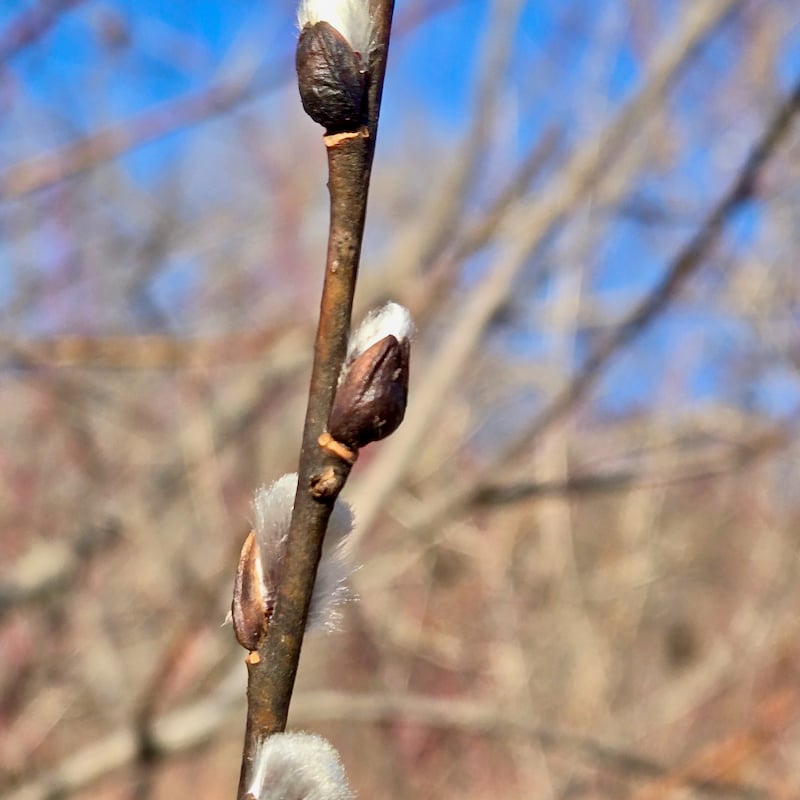
Handy links for more information and education
Frontenac State Park website
Frontenac State Park Association website
If you take pictures in the park, tag us on Instagram
Frontenac State Park bird checklist
Frontenac State Park on iNaturalist
Website for our township, Florence Township
Minnesota Master Naturalist program
Red Wing Environmental Learning Center
Lake City Environmental Learning Program on FB
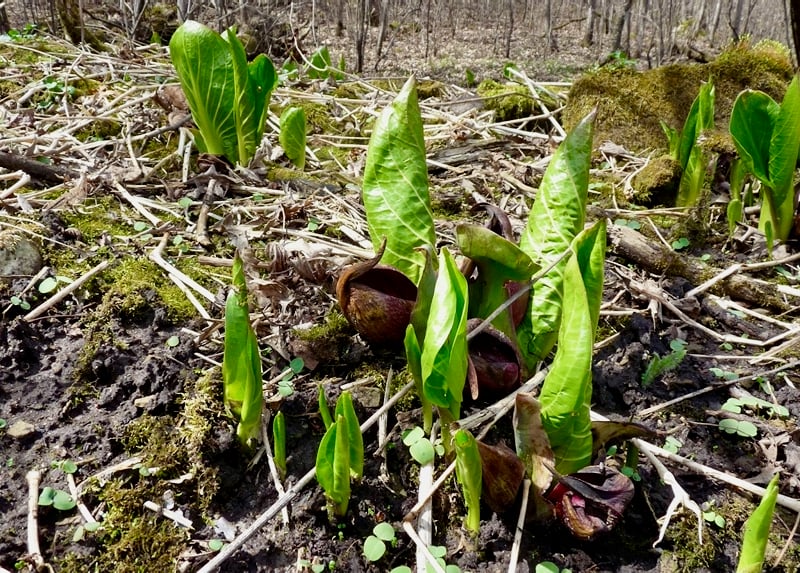
Frontenac State Park staff
Jake Gaster, park manager; Amy Jay, assistant park manager; Amy Poss, lead field worker
Parting shots
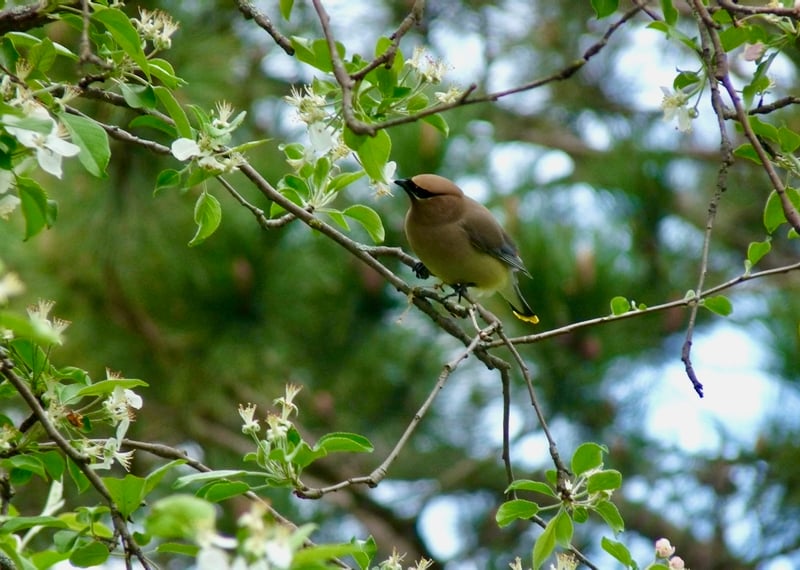
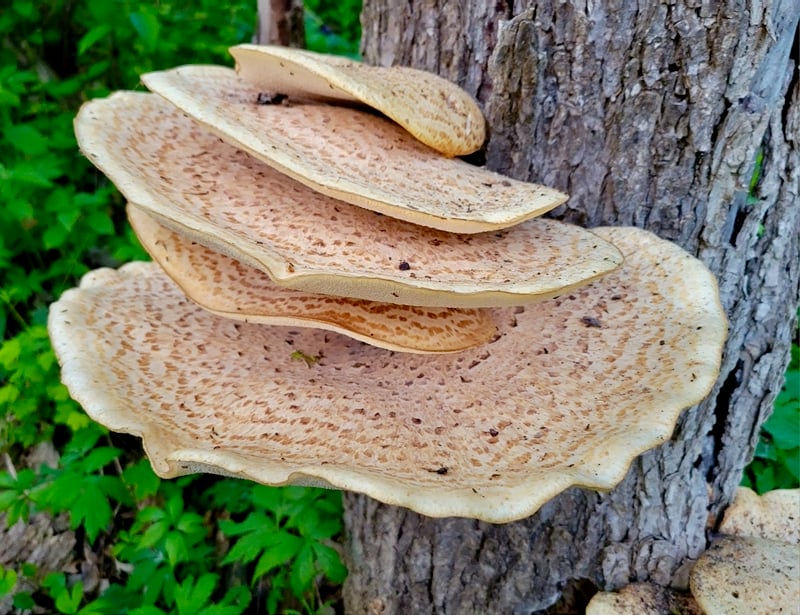
Thank you, readers and park visitors!
This is Volume 2, No. 4 of the Frontenac State Park Association newsletter, which was launched in April 2023. Here’s where to browse the full archives of this newsletter.